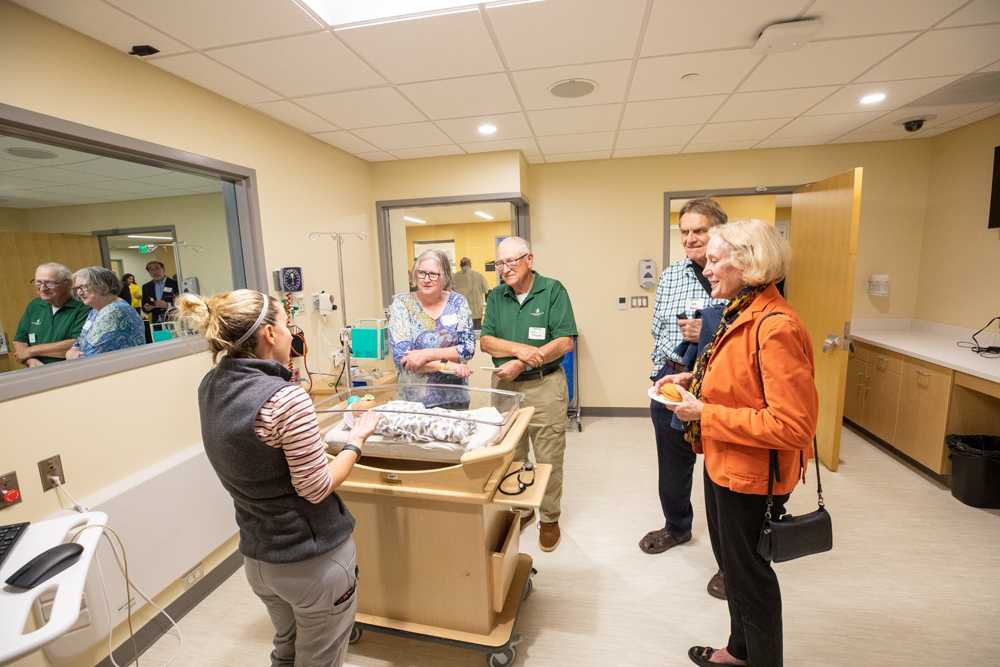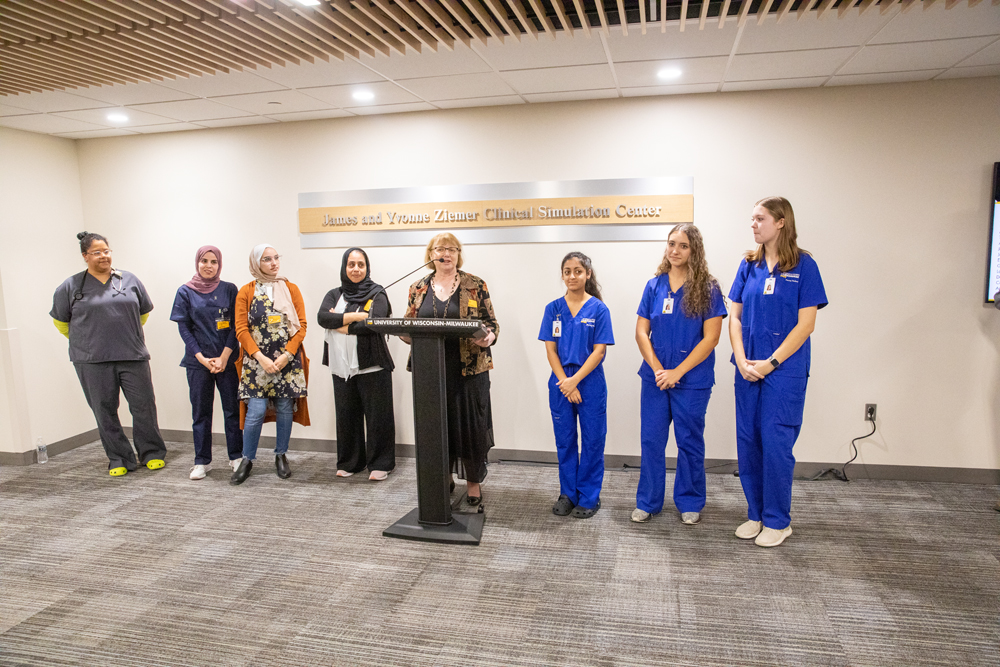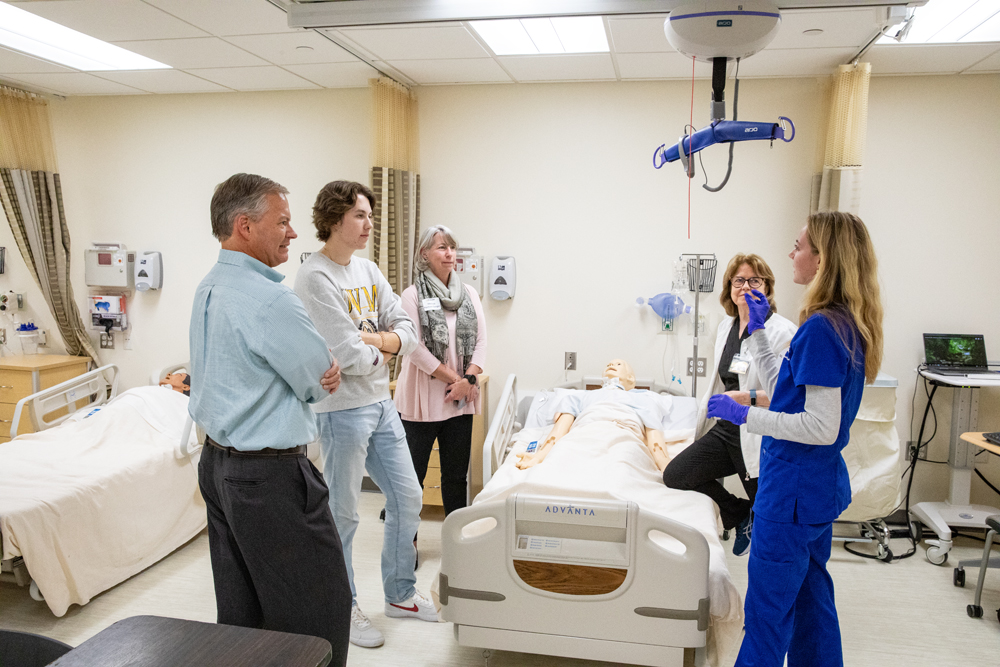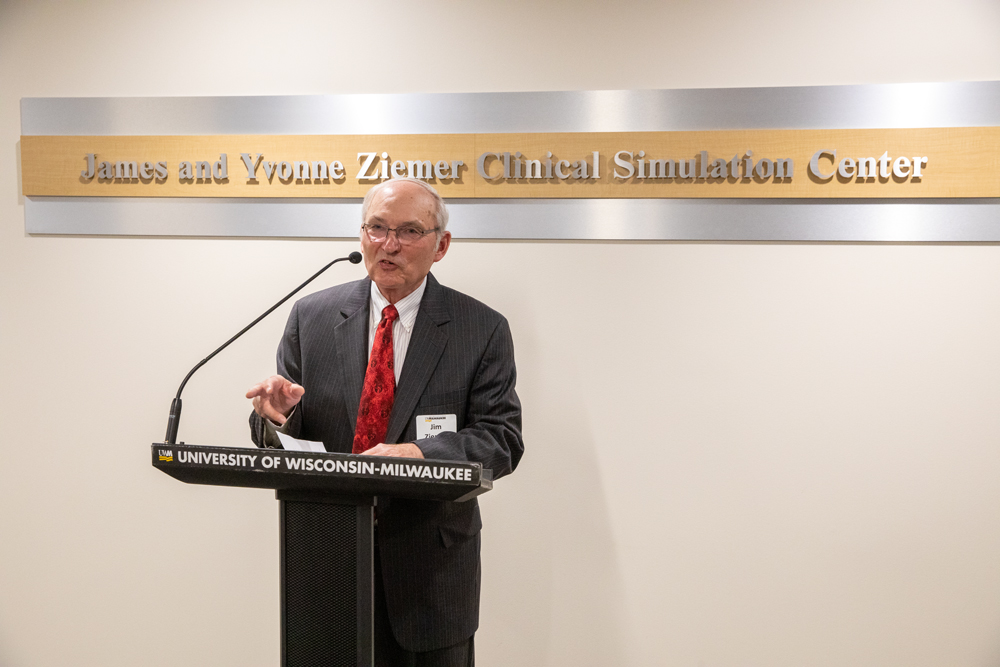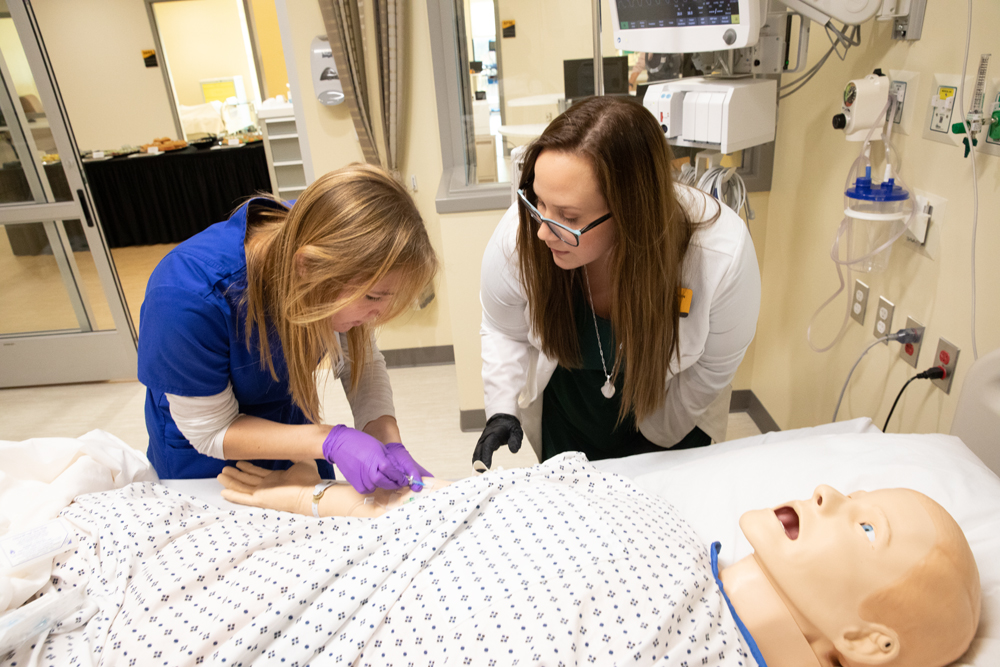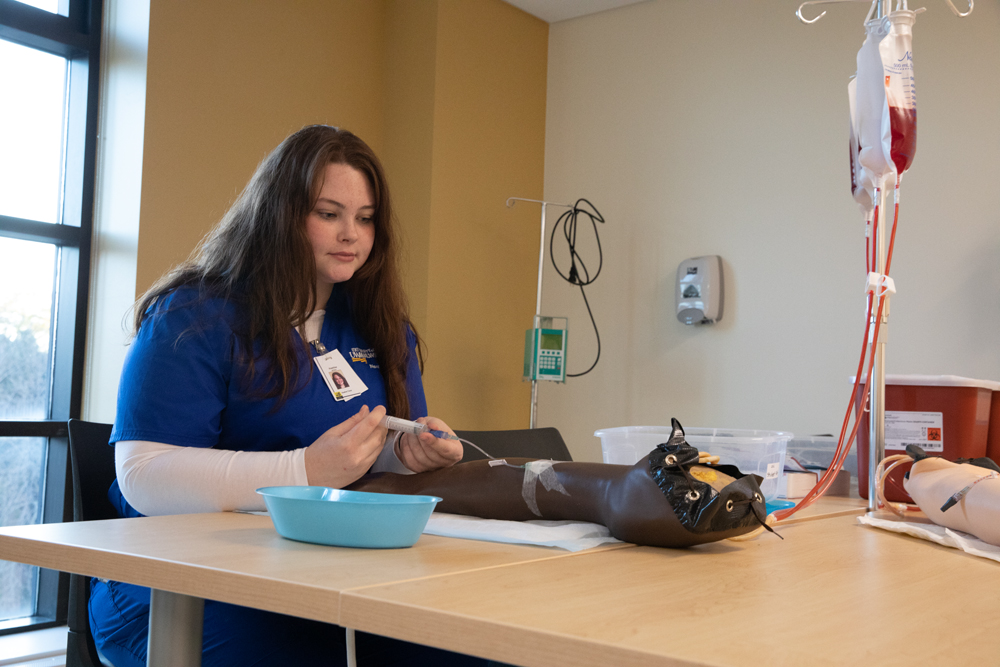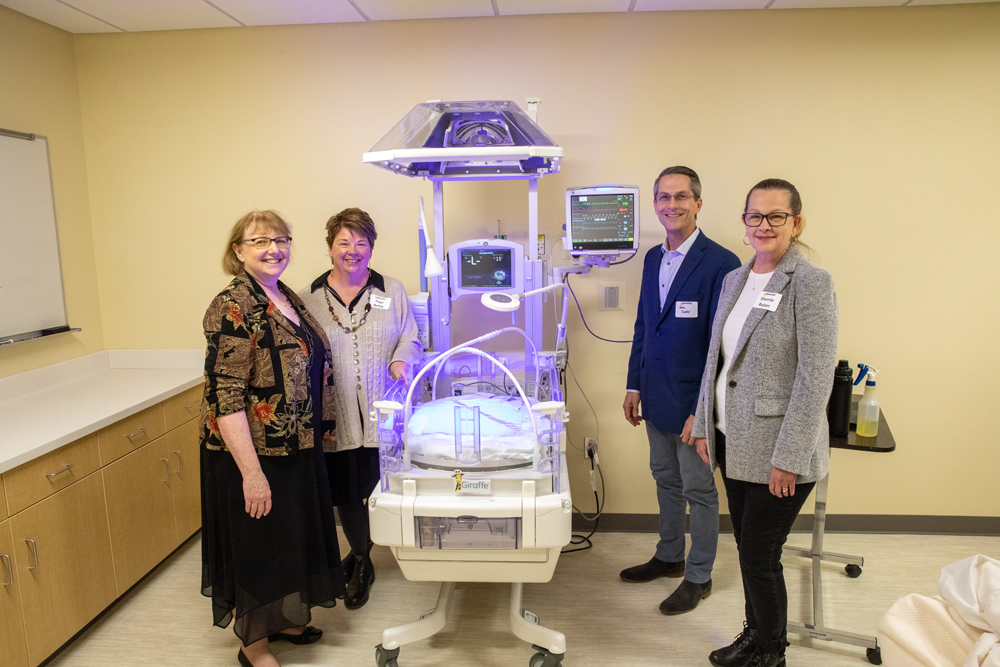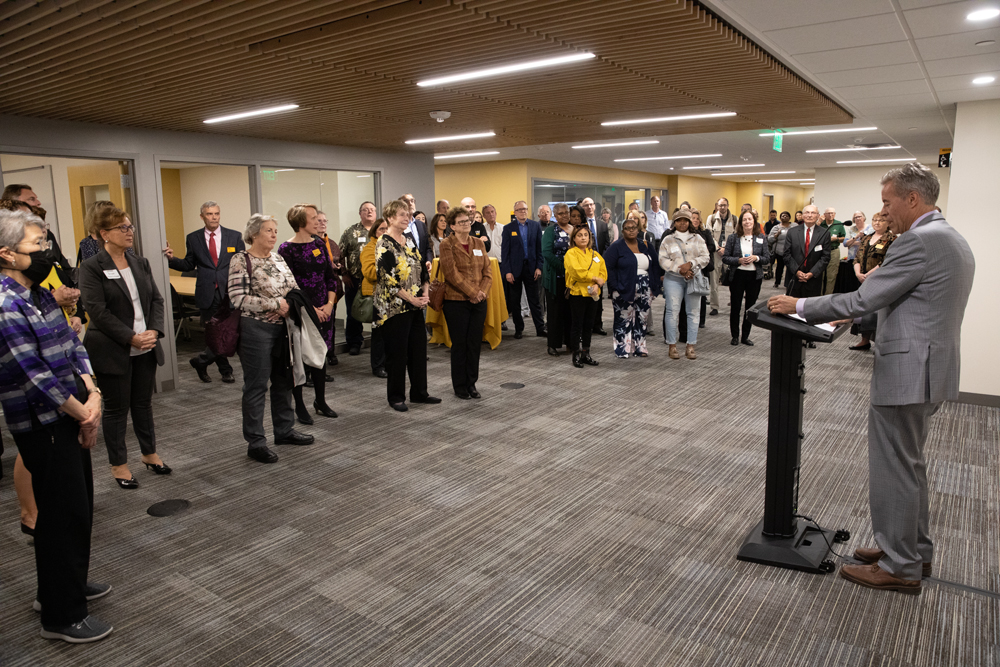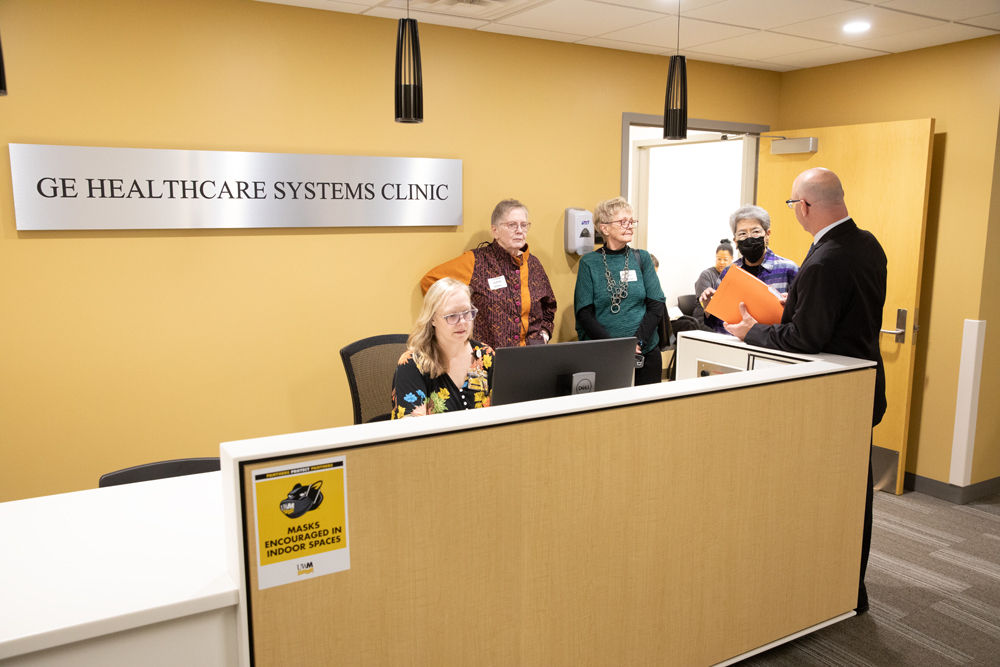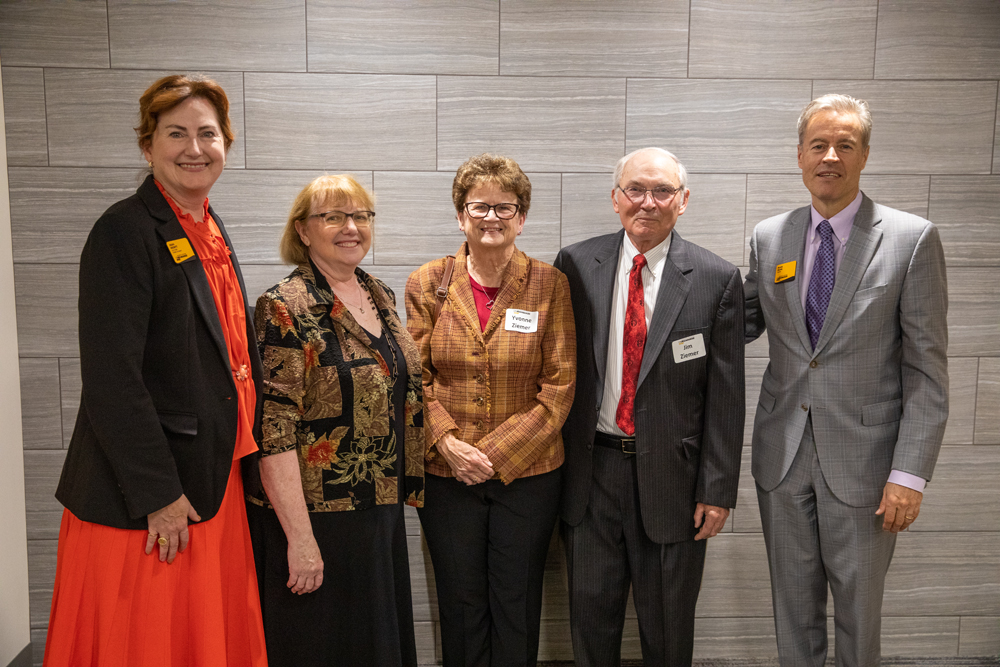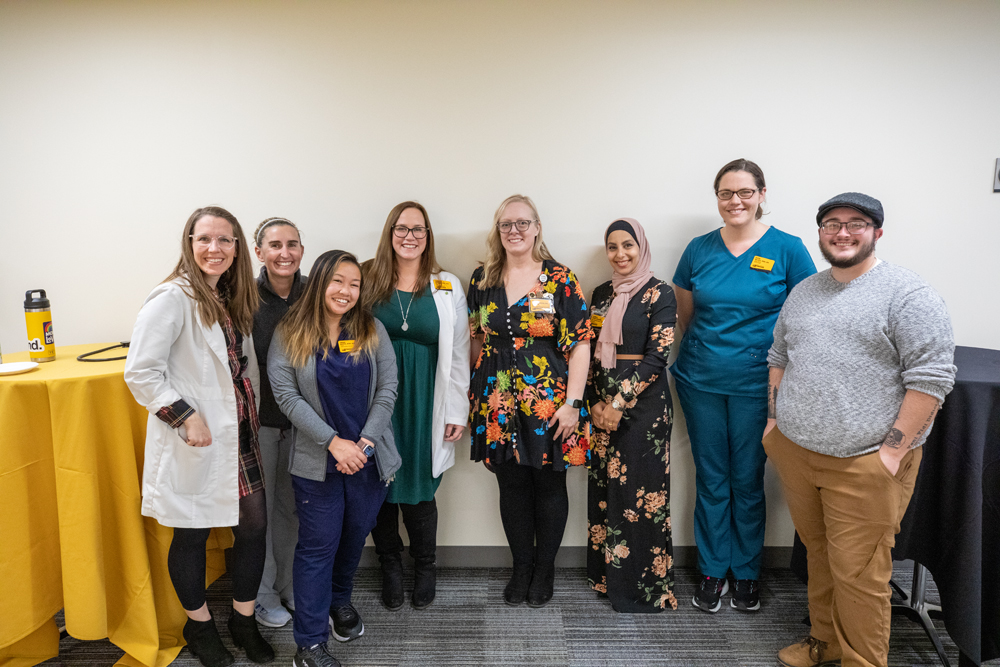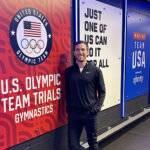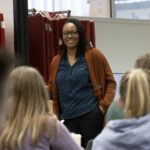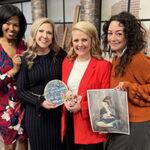UWM celebrated a new, state-of-the-art facility, designed to train the next generation of health care professionals, with a grand opening event on Tuesday, Nov. 1.
While the James and Yvonne Ziemer Clinical Simulation Center went into use this fall, the university showcased the 22,000-square-foot facility at the Northwest Quadrant to students, faculty, staff, campus leaders and community members during the invitation-only event this week.
The center includes experiential learning spaces like staged hospital, surgical, intensive care unit and labor/delivery rooms, complete with sophisticated manikins that breathe, sweat and give birth. There are simulated settings for an apartment and clinic, as well as lab spaces.
“At our old (simulation) center, the manikins were not nearly as sophisticated,” junior nursing student Cassandra Bodart said. “They didn’t breathe or blink. They did not have all these computer-controlled sensors. With these, we can even check its pulse and temperature.”
‘Choose your own journey’
Instructors can program the manikins to exhibit certain conditions and then, when students provide the proper treatment, the manikins respond, clinical simulation instructor Amanda Wrobel said.
“It’s a little like a ‘choose your journey,’ allowing the teaching staff to customize their lessons,” Wrobel said.
Chancellor Mark Mone expressed his gratitude to multiple donors Tuesday, including three-time UWM alumnus and former CEO and president of Harley-Davidson James Ziemer and his wife, Yvonne, who donated $1 million in support of the College of Nursing in 2015.
“UW-Milwaukee is the destination for educating health care professionals,” Mone said. “The entire world is facing shortages of nurses and health care professionals, and the Ziemer Clinical Simulation Center is a clear example of UWM’s commitment to preparing strong practitioners to enter the workforce.”
Making a difference
In his remarks, James Ziemer said the couple’s gift “expresses our hope that our children, grandchildren and all families within our community will have access to the highest quality nursing care.”
“We were attracted (to this project) because of the fact that most UWM graduates stay in Wisconsin after they graduate and that the university could leverage our gift to attract other funding for the College of Nursing,” said Ziemer, who has also made gifts to the School of Education for scholarships and to the Lubar College of Business. “In the end, we knew a donation to this center would address a need, make a difference and enhance education.”
In addition to the Ziemers’ gift, GE Healthcare provided more than $450,000 in medical equipment, including a state-of-the-art incubator, nursing station equipment and software. The center’s clinic has been named the GE Healthcare Systems Suite in recognition of the company’s generosity.
Constance A. (Connie) Greiser, a 1971 nursing alumna, donated $225,000 to fund the Public and Home Health Learning Lab. The lab sets UWM apart from other simulation centers by providing a venue for students to practice home health and assess the risk of falls and other factors for aging patients.
Transformation in health care
“The need for transformation in health care is no longer something we should do; it has become something we must do,” said Kim Litwack, dean of the College of Nursing. She cited higher costs, a rise in chronic illnesses, racial and socioeconomic inequalities, and emerging technologies as factors affecting how health care is provided.
She said the space also will bring groups together for health care collaboration and interdisciplinary education opportunities.
Besides nursing students, the Ziemer Center will benefit students and faculty in other health-related programs, including physical therapy and occupational therapy. It will be available to students from all three UWM campuses.
Realistic training
Junior nursing student Madeleine Belshaw said the manikins are so realistic you can feel where a vein is, as she demonstrated drawing blood and inserting IVs in one of the facilities rooms.
“The manikin’s skin is pliable, so we can learn how to feel for a good bouncy vein,” Belshaw said. “And you can see if you’ve gotten the IV in the right place, because the liquid ‘blood’ actually shows up red in the line.”
Previously, she said, students mostly watched videos of the procedure.
Junior student Emma Marlow said the prospect of training in the new facility is a confidence-booster. “I like the idea of being able to practice on these manikins where I can learn the tasks and make mistakes without causing harm to a real person.”
